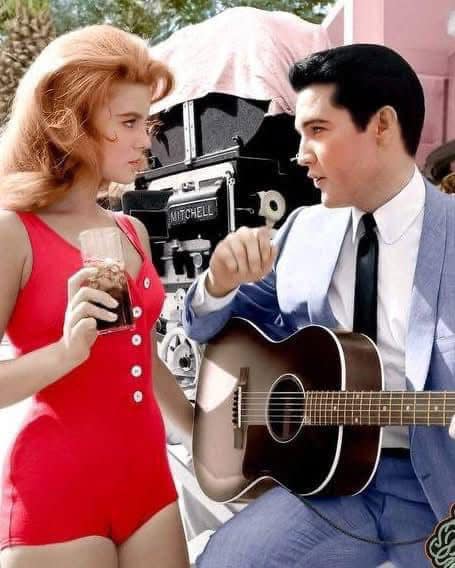Elvis Presley’s Viva Las Vegas remains a shining symbol of Hollywood’s golden era, with its lively music and his unforgettable charisma. Released in 1964, the film features Elvis as Lucky Jackson, a race car driver chasing glory in Las Vegas, and Ann-Margret as Rusty Martin, a vibrant dancer who captures his heart. The chemistry between the two stars was electric both on and off the screen, adding to the film’s lasting appeal.
While the movie dazzles with high-energy performances and a fantastic soundtrack, it also has its share of small goofs and funny moments that fans love to spot. For example, during the famous dance number to the title tune, Viva Las Vegas, keen viewers might notice Elvis’s lip-syncing isn’t always perfectly timed—but Ann-Margret’s radiant energy pulls your eyes right in.
Their duet “The Lady Loves Me” is full of charm and playful teasing. The natural connection between Elvis and Ann-Margret led to some unplanned laughs and missed cues, which only added to the fun and personality of the scene. These little slips make the characters feel more real and relatable.
The film also includes minor continuity quirks, like race cars changing positions between shots or props moving unexpectedly. Occasionally, you can spot stunt doubles during fast car chases, briefly breaking the magic of the moment. These imperfections remind us of the film’s era and the hands-on approach to filming at the time.
Despite these small flaws, Viva Las Vegas stays a beloved classic, with its blend of romance, humor, and great music. The songs, including the unforgettable title track, continue to capture hearts decades later. Ann-Margret’s spark alongside Elvis helped make the movie a timeless celebration of fun and love.
The movie’s little mistakes aren’t flaws—they’re a part of its charm. These moments of spontaneity give Viva Las Vegas a human touch, showing the joy and energy behind the scenes. So next time you watch it, enjoy both the glitz and the delightful quirks that have helped this film sparkle for nearly 60 years.


